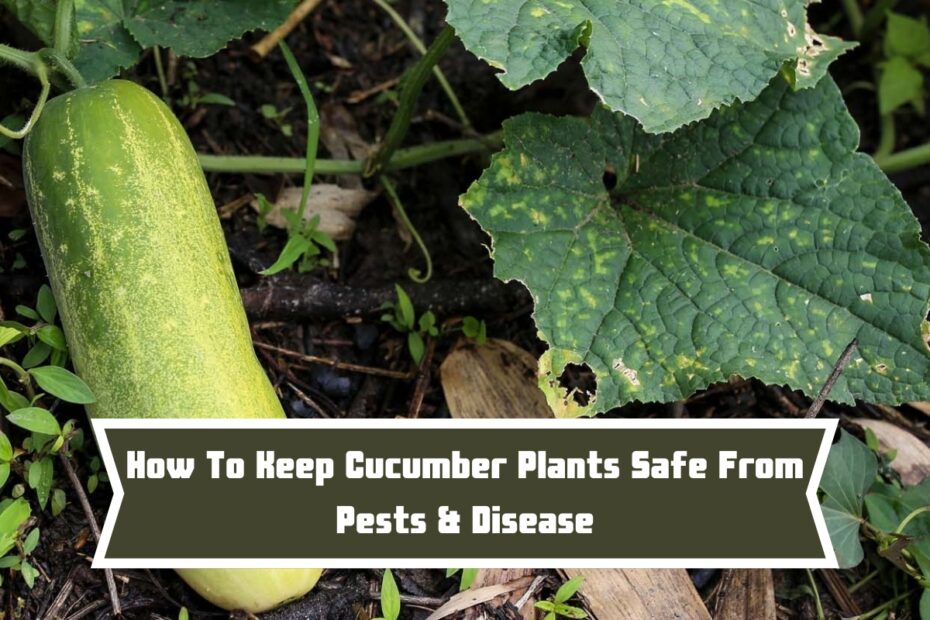It is essential to implement a combination of preventative measures and active management tactics in order to ensure that cucumber plants are protected from illnesses and the presence of pests. The following is an exhaustive tutorial that will teach you how to safeguard your cucumber plants:
1. Choose Disease-Resistant Varieties
It is important to choose kinds of cucumbers that are resistant to common diseases such as powdery mildew, downy mildew, and cucumber mosaic virus. For example, “disease-resistant” or specific resistance codes (such as PMR for powdery mildew resistance) are labels that you should look for for.
2. Proper Planting Practices
Plant cucumbers in a location that receives plenty of sunlight and has soil that drains well. To reduce the risk of soil-borne infections, it is best to avoid planting cucumbers in the same location where other types of cucurbits, such as squash or melons, have been cultivated in the vicinity over the past few years.
Spacing: Make sure there is sufficient space between each plant to ensure that there is appropriate air circulation. This will make the environment around the plants less humid and will help prevent fungal illnesses.
3. Watering Techniques
If you want to keep the leaves dry, you should water the base of the plants rather than the tops. On the other hand, fungal infections are more likely to occur in wet leaves.
For the purpose of preventing infections, it is beneficial to water the soil first thing in the morning so that it has time to dry out over the day.
4. Mulching
A layer of organic mulch, possibly consisting of shredded leaves or straw, should be applied around cucumber plants.
The use of mulch helps to prevent soil-borne diseases from splashing onto the leaves, suppresses weeds, and helps to keep moisture in the soil.
5. Regular Monitoring
Plants should be inspected on a regular basis to look for symptoms of illnesses and pests such as powdery mildew, downy mildew, and bacterial wilt. Aphids, cucumber beetles, spider mites, and whiteflies are examples of pests that can be found on plants.
Early detection enables quick treatment, which in turn reduces the spread of the disease and its impact.
6. Pest Control
Pests such as cucumber beetles and squash bugs can be exterminated from plants by the process of hand-picking.
The use of natural predators, such as ladybugs and lacewings, which are beneficial insects that feed on cucumber pests, should be encouraged.
Neem Oil and Insecticidal Soap: When it comes to controlling aphids and mites, it is recommended to make use of organic therapies such as neem oil or insecticidal soap. They are efficient without causing any harm to the insects that are useful.
Also read:-How To Plant Blueberry Bushes For Success – Grow Incredible Blueberries!
7. Disease Prevention and Management
In the event that fungal illnesses such as powdery mildew or downy mildew are identified, it is advisable to contemplate the utilization of organic fungicides, such as sprays containing copper or sulfur solutions.
For the purpose of preventing the spread of illnesses, timely removal and disposal of infected leaves and plant waste is required during pruning.
In order to prevent pests and pathogens from overwintering, it is important to clean up any plant debris that has accumulated at the conclusion of the growing season.
8. Crop Rotation
To prevent the accumulation of soil-borne illnesses and pests, it is important to rotate crops on an annual basis. Cucumbers and other types of cucurbits should not be planted in the same location for at least two to three years.
9. Support and Training
To prevent cucumber vines from touching the ground, you can use trellises or stakes. In this way, the plants are less likely to come into touch with soil-borne pathogens, and the air circulation around them is improved, which helps to prevent infections.
10. Use Companion Planting
The use of plants that naturally repel pests, such as nasturtiums, marigolds, or dill, is recommended when planting cucumbers beside these plants. For instance, marigolds are considered to be effective at warding off nematodes, whilst dill is known to attract beneficial insects.
